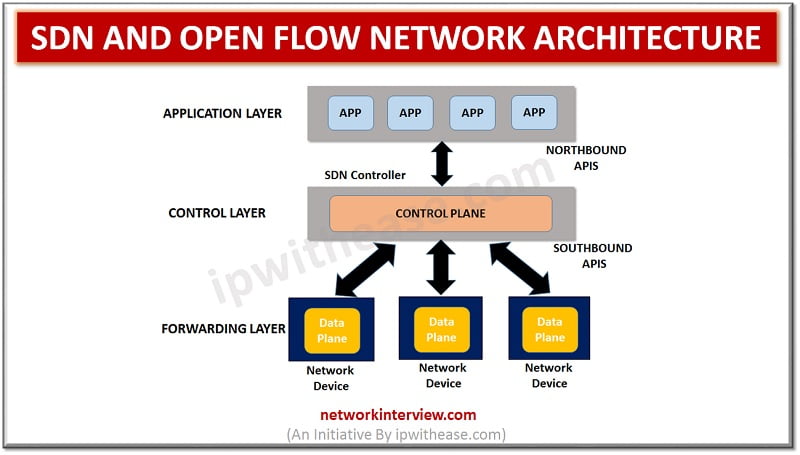
Basics of SDN and Open Flow Network Architecture
SDN and Open Flow Network Architecture
With colossal growth in Cloud computing and Intent based networking, SDN technology has clearly lead the race. Infact SDN has also catered to needs of overgrowing demand on IT for faster response to requests combined with more control over network. The first SDN communication protocol was Open Flow which was responsible for direct interaction between SDN Controller and forwarding plane of network devices like switches and routers etc. In this article, we will understand the concept of SDN and Open Flow Architecture –
Table of content:
- Introduction to SDN
- Open Flow Architecture
- Key Terms of SDN
- Benefits of SDN
- Conclusion
Introduction to SDN
SDN separates the network control plane and forwarding plane and provides a central view for more efficient implementation and running of the network services. SDN is controlled by software functions. SDN segregates the network control and forwarding functions.
Open Flow Architecture
OPEN FLOW is a Layer 2 Protocol bused on Southbound Interface. It manipulates Forwarding Plane devices. Open Flow performs separation of Control and Data planes. It also provides centralization of the control and offers Flow based control mechanism. Open Flow supports three message types:
- Controller to Switch: Sent by Controller to manage the switch.
- Asynchronous: Sent by switch to inform controller.
- Symmetric: Sent by controller and switch to diagnose the problem.
The Open Flow Network Architecture consists of three layers:
- Application layer: Applications running on physical or virtual host.
- Control layer: SDN Controller or Network Controller.
- Forwarding layer: Physical and Virtual network device.
Related – Top 5 SDN Vendors
Key Terms of SDN Technology
SDN Controller: SDN Controller is the Center of the SDN Architecture and the most important SDN Architecture Component. It is the brain of system and central control mechanism of SDN network that controls forwarding plane. The control of all the data plane devices is performed via SDN Controller. It controls Applications at Application Layer. It communicates and controls upper and lower layers with API (Application Programmable Interface). It allows SDN users to gain a centralized control in the entire network and network administrators instruct switches and routers how the forwarding plane should direct network traffic.
Forwarding Plane: This layer of SDN that is full of physical or virtual forwarding devices.
Control Plane: This layer of SDN includes Network Operating System and SDN Controller. The control plane sets up the packet processing rules and establishment of the whole network switching policy.
Data plane: The data plane forwards packets via the router. Decisions are taken by controller instead of on each individual router.
Application Plane: This is top layer in SDN architecture.
Southbound Interface: It lies between the controller and the data plane forwarding devices. Southbound APIs push information to network device. Open Flow is the first southbound API and is a heavily adapted protocol.
Northbound Interface: It lies between the controller and the application plane. Northbound APIs push information above to the applications and business logic, giving network administrators the ability to pragmatically shape traffic and launch services.
API: Application Programmable Interface. Provide systems and software interaction.
Open Flow: South bound Interface API that provides the communication of SDN Controller and SDN Data Plane devices.
Network Devices: Data Plane consists of various Network devices, both physical and Virtual. Data plane is responsible for forwarding of traffic. In the previous traditional networks, both control and data plane was in the same device. In SDN, network device only have the data plane. Incorporation of SDN setup offers a very efficient Forwarding mechanism.
Related – OpenFlow vs Netconf
Benefits of SDN
- SDN provides a way to programmatically configure the switches at runtime, and to manage the network resources in a more efficient way.
- It enables the network administrator to provide bandwidth “on demand”.
- SDN is vendor-neutral technology. It is less hardware dependant. Software and protocols in use are open source.
- SDN is becoming an important concept to deploy cloud services and to incorporate new paradigms such as BYOD (Bring Your Own Device), IoT into industrial networks.
Conclusion
Software defined does not mean that it only uses virtual switches instead of dedicated hardware switches to be programmed. The key feature of SDN is that the control plane is decoupled from the data plane.
Tag:cloud, virtualization



